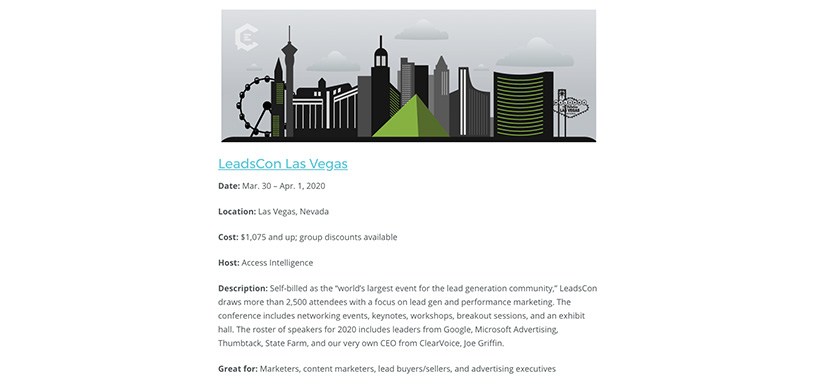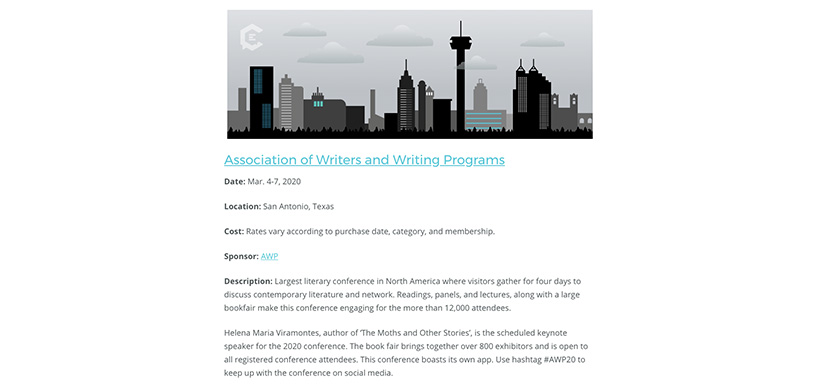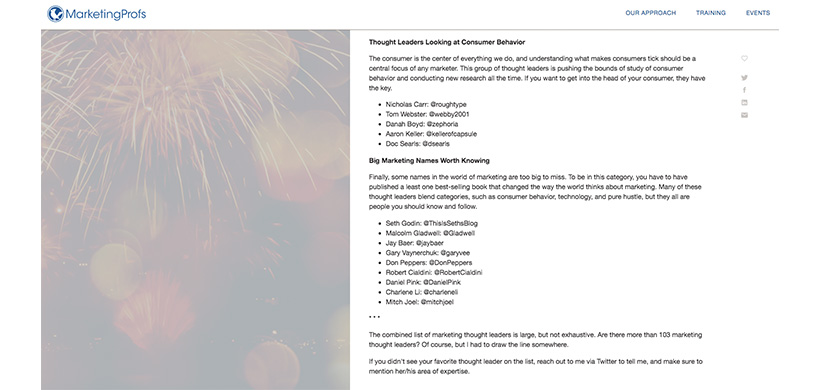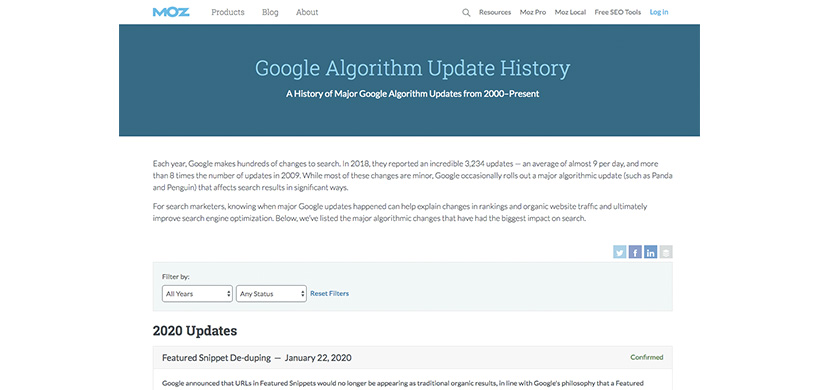What is a content ladder? Content ladders are comprehensive content pages or assets that evolve over time. Able to reach lengths of 3,000 words or more, this long-form content might grow or change length each time it is updated. Content ladders are the seventh level in the content marketing hierarchy.
How often do we take a step back and see how all of this wonderful content we create fits into the bigger picture? Content marketers are a busy lot, so probably not often enough.
Focusing on content levels is like hitting the pause button. When you create content from this perspective, you’re able to analyze the structural hierarchy of how your content works together to support your brand experience.
All in, there are 11 levels of brand content in our content marketing hierarchy. So far we’ve covered six content levels, which are linked in the list so you can explore at your leisure.
How do you develop more audience-centric content? Content ladders are comprehensive pieces that allow you to have purposeful conversations with your audience. Find out how content ladders fit into the bigger picture to help you drive a high-performing content strategy.
What is a content ladder?
Content ladders are comprehensive content pages or assets that evolve over time. Able to reach lengths of 3,000 words or more, this long-form content might grow or change length each time it is updated. Content ladders are the seventh level in the content marketing hierarchy.
An easy way to understand this content level is to think about a real-world ladder. What do you use a ladder for? A ladder is used to climb up or down something. There are many different types of ladders (metal, wood, rope) and they can be placed anywhere to lend support as you work toward reaching new heights.
Pillar vs. ladder vs. skyscraper
Around the lower mid-region of the content marketing hierarchy sit three seemingly similar content levels. Pillar content (#6), ladder content (#7), and skyscraper content (#8). All three fall into the long-form content creation category, but they each have a distinct purpose.
Pillars
Pillar content is an extensive page or asset that covers a broad theme or topic. But, it doesn’t stop there, because pillars are an interconnected content series. From the pillar piece, related sub-topics are fleshed out into additional pieces of content that link back to the top page or asset (aka pillar).
Content ladders are also comprehensive, but they stand on their own. You do not build additional content from a content ladder. Still, you continually link back to a content ladder and send traffic from other pages, assets, and channels — even if they are not direct topical offshoots. Similar to pillars, content ladders are also great for link-building.
Skyscrapers
Skyscraper content is a long-form content page or asset (usually 1,500+ words) that is specifically optimized for link-building. Using hyper-targeted key search terms, skyscrapers are known for their depth and quality… the type of content Google favors and rewards with positive search ranking results.
Content ladders are also in-depth and quality, but they are updated more frequently. Skyscrapers are evergreen, so they are only updated periodically. Original research makes for a good skyscraper blog whereas a list of recurring marketing conferences would serve better as a content ladder.
Ladders
Being that ladder content can reach 3,000+ words in length, this content is typically the longest form of the bunch. You might think of ladder content as evergreen content, because you will come back to it for updates rather than using the “set it and forget” approach. Skyscrapers are evergreen and ladders are more like skyscrapers that are always under the construction.
Ladder content operates more independently than skyscrapers and pillars. Content on a ladder can come and go and no specific content section is critical for the ladder’s performance. All sections of a content ladder work collectively to add value.
Developing audience-centric content ladders
Being audience-centric means developing content that is useful for your intended audience. No matter your industry, producing content focused on the goals and needs of your audience is a must for sparking purposeful conversations.
Before you get into researching viable keyword phrases for your content ladders, reference your persona insights and messaging foundations.
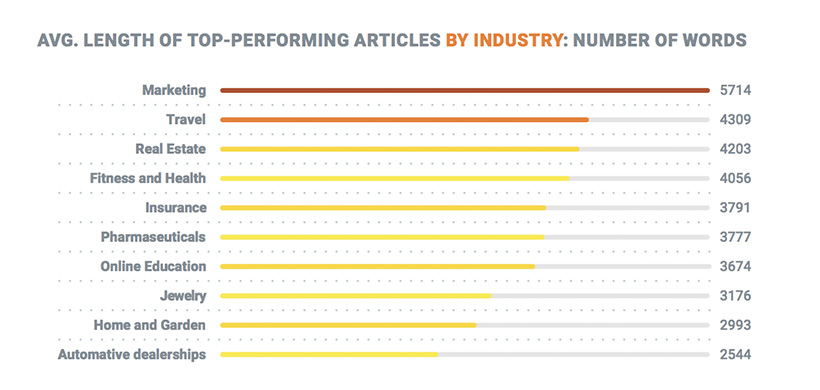
Remember that the lower content levels of the brand hierarchy support the upper levels. A good practice is to look at your core content (#1) and vertical content (#2) for topical inspiration. Since you are going to put a lot of energy into creating your content ladder, make sure it still relates to your business goals and helps your audience in various verticals move closer to reaching their objectives.
It’s easy to get caught up in the romance of bigger word counts, especially when you look at insights from SEMRush, which shows the formidable lengths of top-performing articles across industries. Bigger content doesn’t always mean better content. More important is to share useful information and allow that to dictate the length of the piece.
When collaborating with creators on content ladders, take some time to go over the audience-centric value of this particular piece of content. Make sure they understand who the content is for and why it matters to those individuals.
Because content ladders are detailed and lengthy, hire a writer who specializes in long-form content. They know how to hold someone’s attention by sticking to useful information, rather than filler and fluff that gets them to their target word count faster.
Branded examples of ladder content
There are always brands who just get it — they develop audience-centric content often and well. If you want to add more content ladders into your production schedule, check out how themes and topics from these brands came together into complete content experiences.
Ladder content examples by ClearVoice
Several content ladders are top-performing posts on the ClearVoice blog, like this one, The Ultimate List of Marketing Conferences in 2020. This ladder content offers a comprehensive calendar of the top marketing conferences, which are updated after each conference. The number of featured conferences can change with each update.
Next up is a content ladder I wrote about reputable marketing awards, 2020 Marketing Awards Your Brand or Agency Should Pursue. This list includes all of the details for 13 marketing awards opportunities. Entry costs, deadlines, and awards announcement dates are updated when a new award season kicks off.
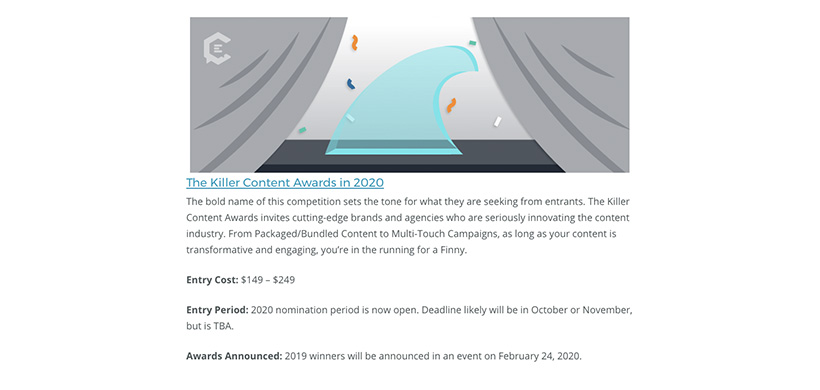
Ladder content example by MarketingProfs
In this MarketingProfs opinion piece from Mat Sweezey of Salesforce, The Big List of 103 Marketing Thought Leaders by Category, you’ll find a well-organized list of thought leaders broken down by a wide range of marketing disciplines (search marketing, social media, B2B, etc.)
A broad list of this nature can be continually updated as thought leaders and categories change over time, making it a prime candidate for ladder content.
Ladder content example by Moz
Ladder content can also be a permanent page on your website, like this Google Algorithm Update History page from Moz. Every year Google makes hundreds of changes to search.
So, the Moz team provided this helpful timeline of major updates that have the biggest impact on search. Anytime they mention algorithm changes in other blog content, they link back to this content ladder.
To be audience-centric, your content needs to support that driving force. High-performing content marketers are looking at the bigger picture of their brand experience. Content ladders support the higher levels in your content hierarchy, making each touchpoint a meaningful and impactful conversation with your intended audience.

